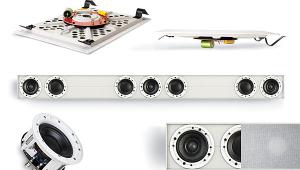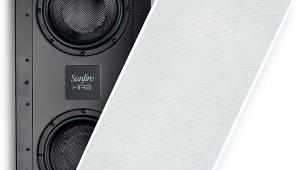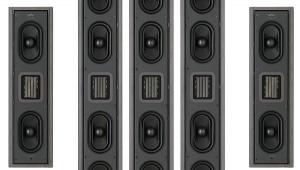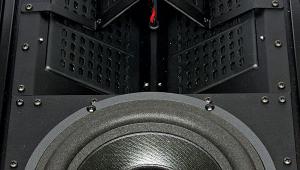Artison Masterpiece LCR-DM On-Wall Speaker System
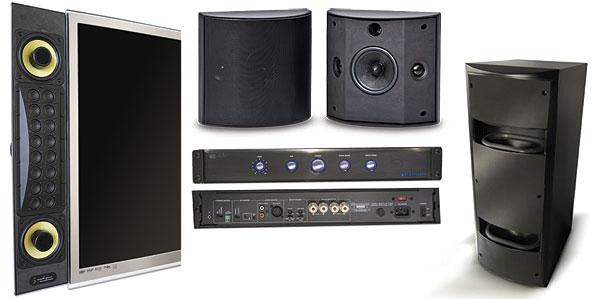
One of the more interesting things I overheard during this year’s CEDIA Expo in Indianapolis was an offhanded comment that “the sound quality of TVs today is worse than it was with TVs 20 years ago.” Think about that for a minute. A new, George Jetson–style, 50-inch flat-panel HDTV hanging on the wall makes one of those old, 50-inch, three-CRT, rear-projection (analog) TVs look like something even Fred Flintstone would pass on. But put those two sets side by side, close your eyes, and give a good, long listen to a movie, a football game, or even the nightly news running on each one of them. Despite the 20 years of technological “improvements” between them, my highly educated (I am a professional, after all) guess is that most people will pick that hulking behemoth 50-inch console rear-projection TV as the one they’d rather have if sound quality were the only concern.
CogniTV Dissonance
Of course, sound quality isn’t the only issue people consider when buying an HDTV. In a lot of home theaters with dedicated LCRs and surrounds, it doesn’t matter because the HDTV’s internal speakers won’t ever feel a single electron coursing through their voice coils. But not everyone who wants great sound has the room for or wants to look at separate LCRs lurking around the TV. For many of the same reasons, in-wall or on-wall speakers aren’t appropriate, either. Maybe the TV needs to go into a corner. Maybe it’s going to sit on a special credenza that belonged to your great-aunt, and separate speakers just won’t look right. Maybe you rent your home and can’t wall-mount your TV and speakers. Maybe…oh, I don’t know, there are tons of perfectly good reasons. But this unquenchable desire to have a TV that looks like it’s from this decade but sounds like it’s from the previous century is a great example of cognitive dissonance—the discomfort caused by keeping two conflicting ideas in your mind simultaneously. Sorry, buddy, but today’s slim HDTVs don’t sound as good as TVs used to. And there ain’t no way you’re going to get them to sound as good as a dedicated home theater.
F. Scott Fitzgerald once wrote in an essay, “The test of a first-rate intelligence is the ability to hold two opposed ideas in the mind at the same time and still retain the ability to function. One should, for example, be able to see that things are hopeless and yet be determined to make them otherwise.” He wasn’t writing about the sound of HDTV speakers, but you can apply the quote to speaker designer Cary Christie and the Artison Masterpiece LCR-DM speakers. No newcomer to the industry, Christie was one of the founders of Infinity as well as president and principal designer for Acoustic Research. He looked at what was obviously a hopeless situation—getting great sound out of flat-panel HDTVs that are, in some cases, as thin as 0.28 inches, while at the same time making the speakers look like they’re an integral part of the panel. And he was determined to make it otherwise.
Anti-Soundbar and Uncle Subwoofer
Of course, there are soundbars designed to fit up against the bottom of a flat-panel HDTV, and some of them are attractive enough. But in my opinion, none of them—including the ones made by the same manufacturer as the TV—look like they’re an organic part of the set. And let’s not even get into a discussion of how uninspiring the majority of them sound.
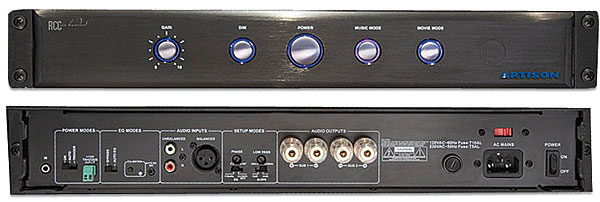
Christie and his company, Christie Designs, have taken what you could call an anti-soundbar approach at Artison by designing speakers that install on the sides of the TV. Every left/right Masterpiece LCR-DM speaker pair ($3,228 per pair) ships with a special bracket that attaches to the back of a flat-panel HDTV the same way a wall-mount bracket would. (You can use the VESA-compliant bracket in conjunction with most wall mounts, too.) Once you attach them to the bracket, you can adjust the speakers in three directions (left/right, up/down, forward/backward) to bring them in line with and snug up against the panel’s front bezel.
Each Artison Masterpiece LCR-DM speaker is 30 inches tall, 6.5 inches wide, and only 2.1 inches deep (with the grille on). Since not every flat-panel HDTV is exactly 30 inches in height, Artison makes a wide variety of LCR-DM grilles ($175 per pair) in sizes that match most of the HDTVs on the market. In most cases, the grilles—which you’ll need to order separately based on your particular HDTV—are taller than the speakers, but that’s how the same underlying Masterpiece speaker model can be used with different TVs and still look like an integral part of each set. Velcro inside the grilles latches on to Velcro pads that cover the flat surface of the inverted-magnet structures suspended in front of each one of the two 5.5-inch Kevlar bass drivers near the top and bottom of the speaker. This method of attaching the grille lets you make minor adjustments to the grille panel to bring it in line with the TV bezel without having to adjust the position of the speaker itself.
Since the speakers are only about 2 inches deep, it’s not surprising that Artison rates the Masterpiece LCR-DM’s +/-3decibel frequency response down to only 80 hertz. To help flesh out the system, Artison sent a pair of its RCC 600-FS freestanding subwoofers ($450 each) with a single RCC 600-SA 600-watt Class D subwoofer amplifier ($1,125) to power both. The amp comes with a calibrated microphone and built-in room correction circuitry (which you can turn off if you don’t want to use it). This made a pretty substantial difference in the way the subs performed in my room. The subs are interesting not only because they can produce some pretty intense bass in the room, but because the four drivers in the cabinet are configured so that they oppose each other, with the driver baskets attached to a rigid baffle. The whole setup is designed “to allow the reactance forces generated by the cone motion to cancel.” In other words, the subwoofer cabinet is nearly vibration free. In addition to the obvious distortion-reducing benefits, the vibration-free cabinet lets you install the subs inside furniture (there’s an optional cabinet mount available) or even on a shelf. The RCC 600-FS cabinets aren’t small, though, so you’d better have a pretty hefty shelf to handle their 9.5-by23.5-by-13-inch dimensions and 28.5-pound weight. But the possibility of hiding one or two of them in plain sight makes them a perfect complement to the Masterpiece LCR-DM speakers, considering that their raison d’être is to create great sound without being seen.
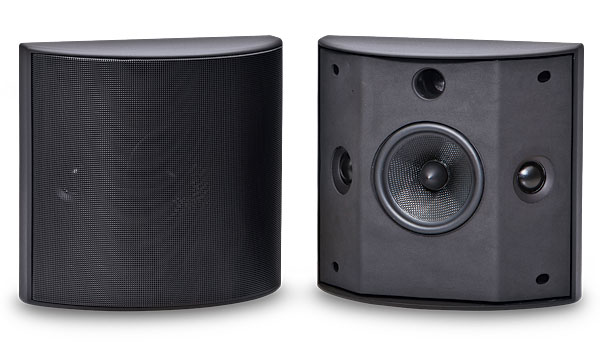
Two’s Company, Three’s Invisible
Being able to use various size grilles to perfectly match the TV isn’t the only clever thing about the Masterpiece LCR-DM speakers. In addition to the pair of 5.5-inch bass drivers, behind the grilles is an impressive-looking arrangement consisting of two curved line arrays using eight 1-inch wide-range drivers in each array. Christie explained to me that the curved line array design controls the speaker’s vertical dispersion pattern while it also creates a wide horizontal image. Because of their tightly packed arrangement, the 1-inch drivers are said to act as a single low-distortion driver down to about 800 Hz, where the bass drivers take over. To keep the speaker cabinets as thin as possible, the bass drivers use an inverted magnet structure that places the magnet in front of the diaphragm rather than the usual behind-the-cone placement. Each Masterpiece LCR-DM speaker also includes a side-firing Stage Tweeter built into the rear of the cabinet, with a switch on the front that lets you turn it on or off depending on your room acoustics and listening preference.
- Log in or register to post comments



